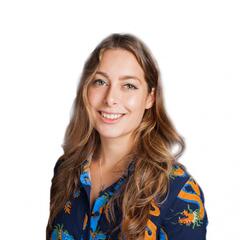Things that the Dutch did first
The Dutch have done many great things and have invented various instruments and products that we use daily, but it is not just inventions that the Dutch have contributed to the society we live in today.
Dutch firsts
The list of Dutch firsts goes on and on, but let’s take a look at five of them.
Legalised Gay Marriage
The Netherlands was the first country in the world to legalise same-sex marriage, in 2001. To include same-sex marriage in the civil marriage statute, only one sentence had to be altered.
The first same-sex couple was pronounced officially married on April 1, 2001, and since then many same-sex couples have gone on to enjoy the same marital privileges as those in man-woman couples. In 2016, according to figures from Statistics Netherlands (CBS), 665 male-male couples and 771 female-female couples tied the knot in the Netherlands.
Since the Netherlands' move to legalise gay marriage, many other countries have followed. In Europe, 15 countries currently allow same-sex marriage. Germany is the latest country to recognise and allow gay marriage; same-sex marriage became legal on October 1, 2017.
Created Elstar apples
Those popular apples you see on supermarket shelves are actually a Dutch “creation” as it were. The Elstar apple was first developed in Elst, the Netherlands in 1972. It is a cross between the well-known Golden Delicious and Ingrid Marie variety of apples.
The Elstar apple is widely grown in Europe; however, it is not as commonplace as other apples in the UK. An Elstar apple has a recognisable sweet and sharp flavour and can be eaten fresh or used for cooking, drying or in juice. Many use this apple type for desserts because of its sweet flavour.
The apple itself is golden yellow with a red blush, which covers large areas of the yellow. Another type of Elstar, the Red Elstar, is completely red with odd instances of yellow appearing on the skin.
Brought about the first orange-coloured carrots
When you think about the colour of carrots, your first thought is probably orange. However, if it weren't for the Dutch, the colour would entirely depend on your location in the world. Your carrots might be purple, yellow, white or even red.
In the 16th century, orange carrots were cultivated in Hoorn, the Netherlands, which is where the Horn variety of carrot supposedly gets its name. The orange colour can be attributed to the high levels of beta-carotene in the vegetable. In order to achieve this colour, it is likely that a deep yellow variety was manipulated through selective breeding to create a consistent orange colour.
It is probable that orange carrots existed before the Dutch got involved, but perhaps there was no word to describe their colour yet. The orange colour to describe carrots actually comes from the fruit orange. Before the fruit’s name was used to describe the colour, there was no word for the in-between yellow / red colour which carrots nowadays have.
There is also the theory that orange carrots were developed to pay tribute to the Dutch Monarchy and King at the time, William of Orange. However, there is no proof that the orange colour of carrots was politically motivated. In any case, all modern western carotene varieties today descend from the orange Horn carrot varieties, whose predecessor was the Long Orange Dutch carrot.
Made the first modern atlas
Generally, Abraham Ortelius is recognised as the father of the first modern atlas. In 1570, Ortelius published a book of uniform maps and called it the Theatrum Orbis Terrarum or Theatre of the World. The atlas was extremely popular and was reprinted in several different languages up until 1612. This atlas, amongst being the first collection of uniform maps, was also the first atlas to include accompanying text which explained the regions portrayed on the maps.
The first edition of Ortelius’ atlas featured 70 maps and throughout his life he continued to add to these and update the atlas. The atlas contained virtually no maps drawn by Ortelius himself, but he did write the accompanying texts himself and mention the map sources, and he formatted every map so that it was consistent with the others in his atlas. In 1612, an edition was brought out with 167 maps.
Ortelius was born in 1527, in the City of Antwerp. Although Antwerp is now a part of Belgium, back then it was a part of the Netherlands, and as such we can say that the Dutch created the first modern atlas.
Organised the first European blood bank
A world without blood banks would be unimaginable. How would hospitals be able to help patients without them? Well, we have the Dutch to thank for blood banks in Europe.
In 1940, Willem Johan Kolff, most famous for being the inventor of the artificial kidney, organised the first blood bank in Europe at the Zuidwal hospital in The Hague. At the time, Kolff was practising medicine in Kampen. He had previously practised in Groningen, where he had specialised in internal medicine.
When the Second World War broke out in The Hague, Kolff established a blood bank, which not only helped patients in The Hague, but also victims of the war in Rotterdam. The collected blood was transported by car.
Many more Dutch firsts
These five Dutch firsts represent a small number of things, which the Dutch have contributed to the world we know today. Check out some of the Dutch inventions that put the Netherlands on the map.
Which Dutch firsts didn't you know about?



COMMENTS
Leave a comment